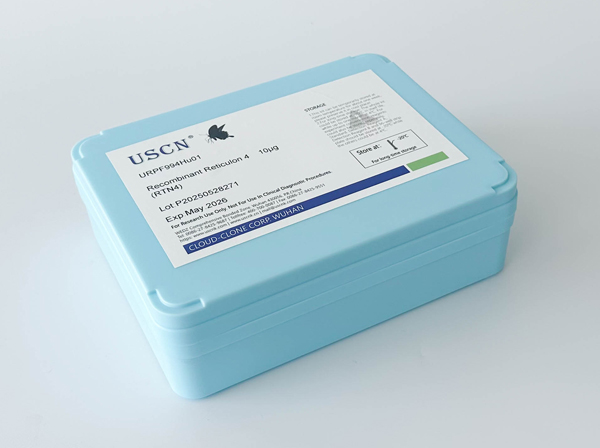Active Elastin (ELN)
WBS, WS, SVAS; Tropoelastin; Supravalvular Aortic Stenosis; Williams-Beuren Syndrome
- Product No.UAPB337Mu01
- Organism SpeciesMus musculus (Mouse) Same name, Different species.
- Buffer FormulationPBS, pH7.4, containing 0.01% SKL, 5% Trehalose.
- TraitsFreeze-dried powder
- Purity> 95%
- Isoelectric Point9.3
- ApplicationsCell culture; Activity Assays.
- Download Instruction Manual
- UOM 10µg50µg 200µg 1mg 5mg
-
FOB
US$ 139
For more details, please contact local distributors!US$ 348
For more details, please contact local distributors! US$ 696
For more details, please contact local distributors! US$ 2088
For more details, please contact local distributors! US$ 5220
For more details, please contact local distributors!
ACTIVITY TEST of the Active Elastin (ELN)

Elastin (ELN) is an extracellular matrix (ECM) protein responsible for the extensibility and elastic recoil of many vertebrate tissues. ELN is abundant in elastic tissues, and tissues rich in elastin include the aorta and major blood vessels, the lungs, elastic ligaments, tendons and the skin. ELN can bind the elastin receptor complex and other receptors and stimulate migration and proliferation of monocytes and skin fibroblasts. Elastokines can also contribute to cancer progression. Deletions and mutations in this gene are associated with supravalvular aortic stenosis (SVAS), autosomal dominant cutis laxa. Decorin (DCN), an extracellular matrix (ECM) protein, is one of targets of ECM. Thus a functional binding ELISA assay was conducted to detect the interaction of recombinant mouse ELN and recombinant human DCN. Briefly, ELN was diluted serially in PBS with 0.01% BSA (pH 7.4). Duplicate samples of 100 μl were then transferred to DCN-coated microtiter wells and incubated for 1h at 37℃. Wells were washed with PBST and incubated for 1h with anti-ELN pAb, then aspirated and washed 3 times. After incubation with HRP labelled secondary antibody for 1h at 37℃, wells were aspirated and washed 5 times. With the addition of substrate solution, wells were incubated 15-25 minutes at 37℃. Finally, add 50 µL stop solution to the wells and read at 450/630 nm immediately. The binding activity of recombinant mouse ELN and recombinant human DCN was shown in Figure 1, the EC50 for this effect is 0.068 ug/mL.
USAGE of the Active Elastin (ELN)
Reconstitute in 10mM PBS (pH7.4) to a concentration of 0.1-1.0 mg/mL. Do not vortex.
STORAGE of the Active Elastin (ELN)
Avoid repeated freeze/thaw cycles. Store at 2-8°C for one month. Aliquot and store at -80°C for 12 months.
STABILITY of the Active Elastin (ELN)
The thermal stability is described by the loss rate. The loss rate was determined by accelerated thermal degradation test, that is, incubate the protein at 37°C for 48h, and no obvious degradation and precipitation were observed. The loss rate is less than 5% within the expiration date under appropriate storage condition.
INCREMENT SERVICES
BCA Protein Quantification Kit
Molecular Mass Marker for Protein
Monoclonal Antibody Customized Service
Polyclonal Antibody Customized Service
Protein Activity Test Experiment Service
Electrophoretic Mobility Shift Assay (EMSA) Experiment Service
Buffer
Lentivirus Packaging Experiment Service
Adenovirus Packaging Experiment Service
Real Time PCR Experimental Service
Spike RBD Protein (S-RBD)
Protein G
Protein A
Related products
| Catalog No. | Organism species: Mus musculus (Mouse) | Applications (RESEARCH USE ONLY!) |
| URPB337Mu01 | Recombinant Elastin (ELN) | Positive Control; Immunogen; SDS-PAGE; WB. |
| URPB337Mu02 | Recombinant Elastin (ELN) | Positive Control; Immunogen; SDS-PAGE; WB. |
| UAPB337Mu01 | Active Elastin (ELN) | Cell culture; Activity Assays. |
| UPAB337Mu01 | Polyclonal Antibody to Elastin (ELN) | WB,IHC,ICC/IF |
| UPAB337Mu02 | Polyclonal Antibody to Elastin (ELN) | WB; IHC; ICC; IP. |
| ULAB337Mu81 | FITC-Linked Polyclonal Antibody to Elastin (ELN) | WB; IHC; ICC; IF. |
| ULAB337Mu71 | Biotin-Linked Polyclonal Antibody to Elastin (ELN) | IHC |
| USEB337Mu | ELISA Kit for Elastin (ELN) | Enzyme-linked immunosorbent assay for Antigen Detection. |
| ULMB337Mu | Multiplex Assay Kit for Elastin (ELN) ,etc. by FLIA (Flow Luminescence Immunoassay) | FLIA Kit for Antigen Detection. |



